Do Knee Sleeves Help With Squats? Pros/Cons Explained
Knee sleeves are commonly worn by recreational and elite level lifters when performing compound gym movements. They add compression, support, and some stability to the knee joint.
With this in mind, do knee sleeves help with squats? How much do knee sleeves add to squat performance? We’ve answered these questions below.
Do Knee Sleeves Help With Squats? – Wearing knee sleeves for squats provides compression to your knee joint and surrounding structures, helping to add more bounce at the bottom of the squat movement, improve confidence, and improve knee health. These can all help improve squat performance.
The Role of Knee Sleeves for Athletes
A knee sleeve is a compression garment designed to be worn around the knee joint. It’s a single piece of material that slides up the leg and stays against the knee as the joint performs different movement patterns when exercising and during sporting events.
Purported benefits of compression garments such as knee sleeves include improved blood flow, reduced pain and inflammation, and better support. Knee sleeves are designed to be worn for lower-body movements such as squats and deadlifts but are also used for accessory exercises such as lunges.

Most knee sleeves are made from neoprene or a neoprene blend with SBR that helps to prevent the sleeves from permanently stretching out of shape. Some sleeves designed for everyday use during sporting events may be constructed from nylon or spandex. Different knee sleeve thicknesses offer varying levels of joint support and movement freedom, allowing you to customize them according to your needs.
Different types of knee supports include:
1. Performance Knee Sleeves
Designed to provide compression and added support at the bottom of the squat movement. Should be used for training and working sets to improve performance.
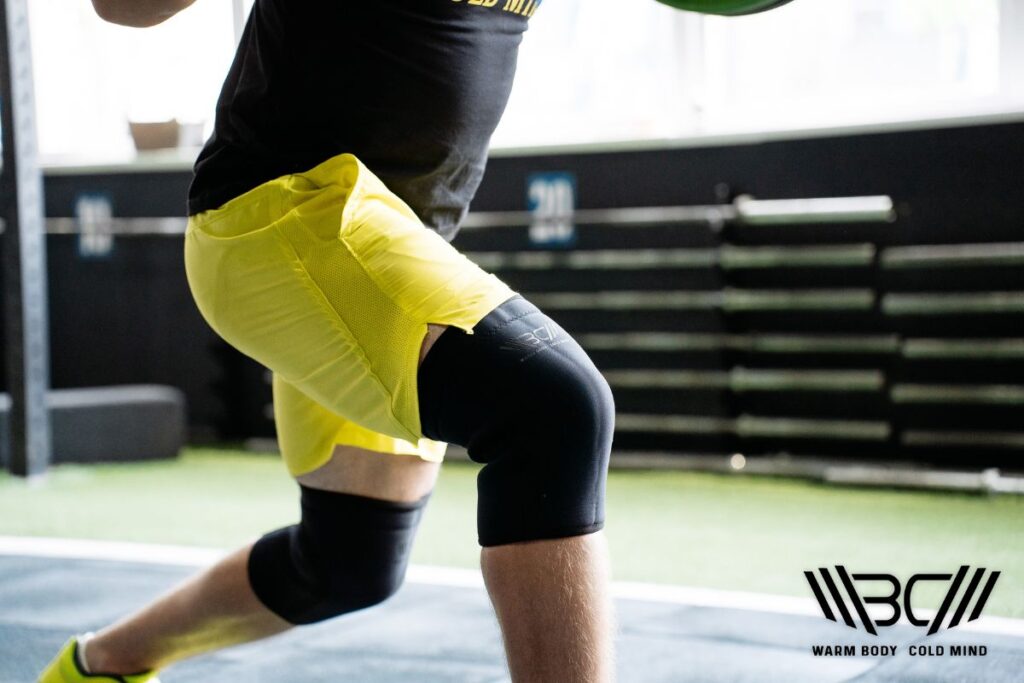
2. Daily Use Knee-Sleeves
Often made of thinner nylon and/or spandex materials. Provide a little compression but mainly used for added warmth and comfort during everyday activities.

3. Rehabilitative Knee Sleeves
Provide support for knee rehabilitation and not performance. May contain side supports and a front patella hole to keep the knee joint from moving out of place during recovery.
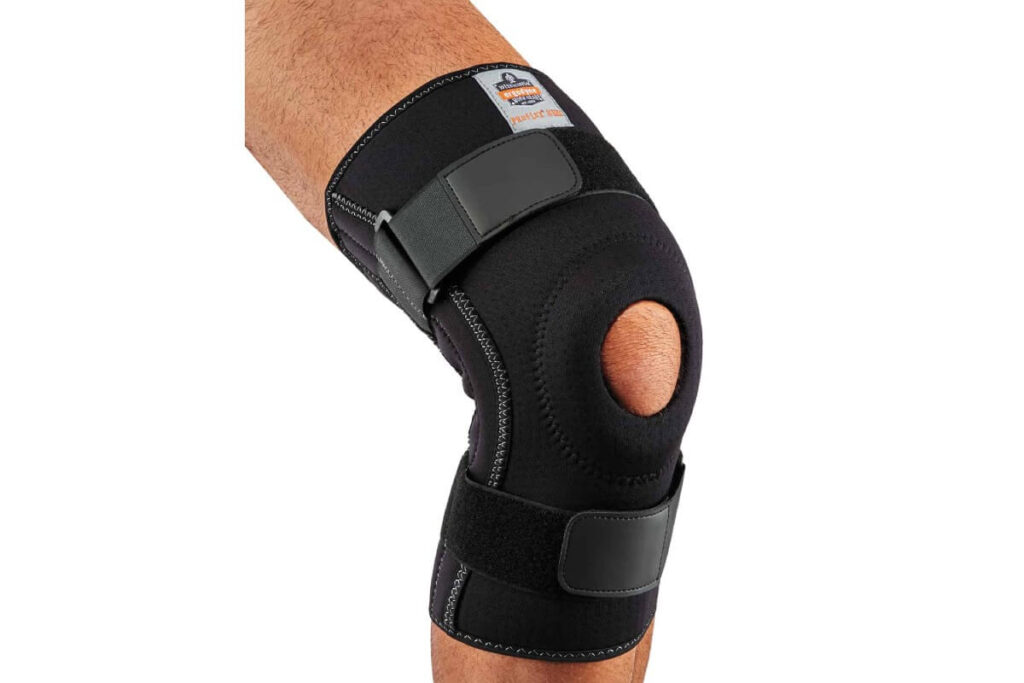
4. Knee Braces
Common types include functional, hinged, and offloaded braces. Designed to restrict knee movement and provide maximum support following surgery or injury.
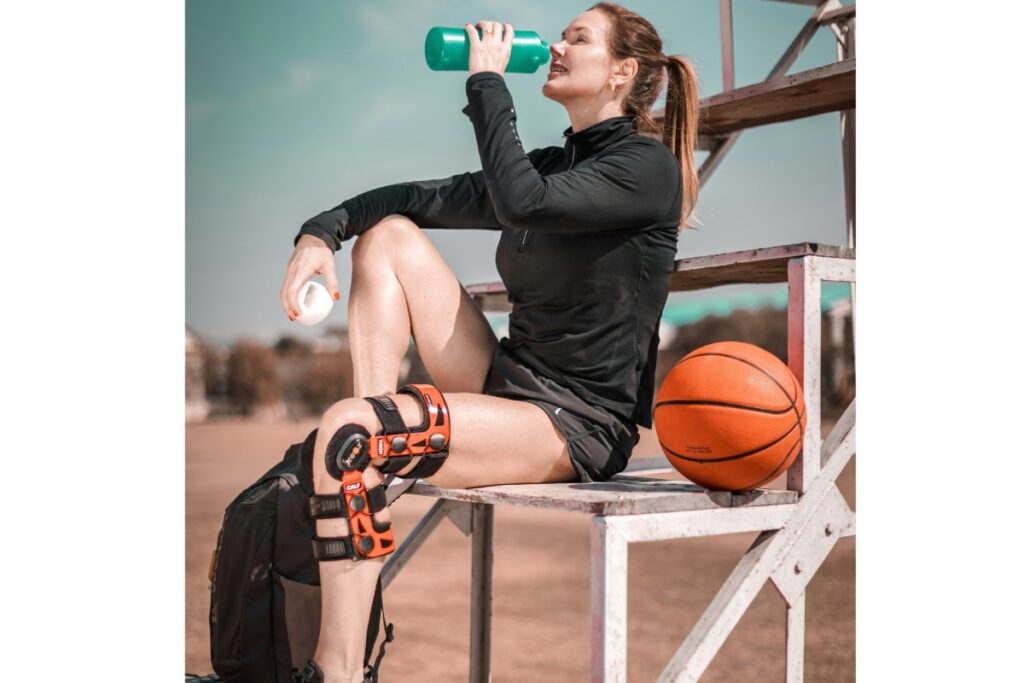
How Do Knee Sleeves Work?
So, what are the proposed mechanisms behind wearing them and what do knee sleeves do for squats? Let’s take a look at these questions in more detail first before discussing the possible benefits.
Knee sleeves work by providing warmth and compression to the knee joint, ligaments, and surrounding structures. The added compression increases blood flow and nutrient delivery to the knee, improving knee health, and reducing rating of perceived exertion when lifting.

7mm Weightlifting Knee Sleeves
Discover the ultimate support with Warm Body Cold Mind knee sleeves providing stability and comfort.
Alongside this, the compression provided by the knee sleeves helps with knee joint control and stability. For these reasons, knee sleeves are commonly used for squats to aid performance in events where the knee joint comes under increased pressure, such as at the bottom of the squat movement.
When performing squats or other compound movements, the warming effect felt by the knee sleeves can help to reduce pain and discomfort when lifting and following a heavy session. Knee sleeves may also be used post-workout to help improve recovery time by reducing the amount of swelling around the knee joint.
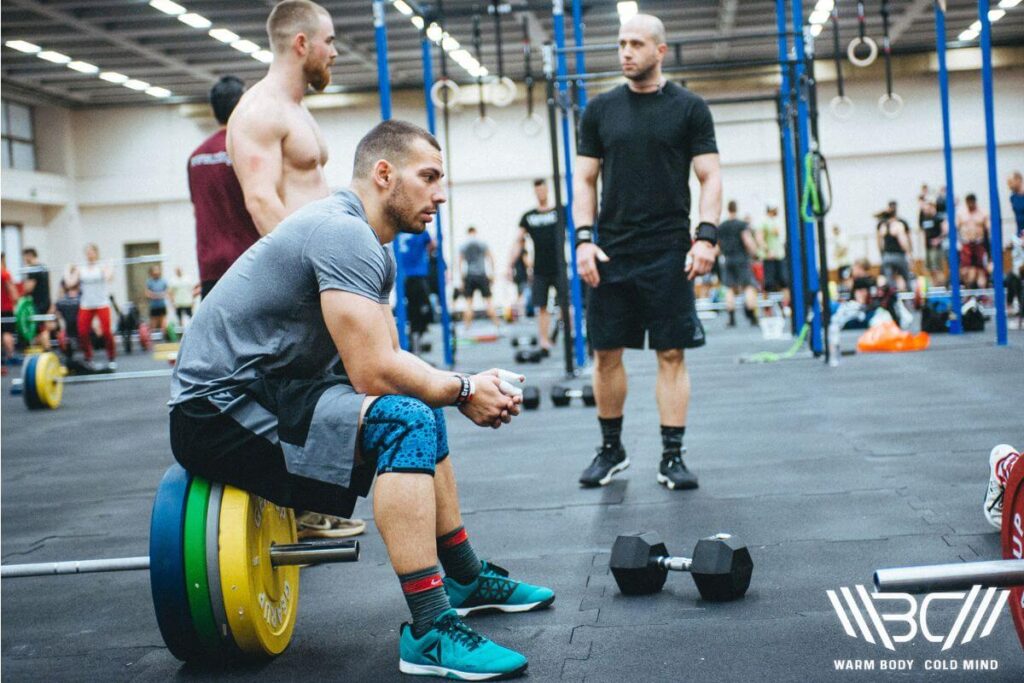
Benefits of Knee Sleeves for Squatting
Wearing knee sleeves for squatting has a host of benefits which include:
✅ Improved Squat Performance
Whilst knee sleeves won’t add huge amounts to your squat, the added support and stability provided by the compressive material can help add bounce to the bottom squat position and improve performance.
Alongside this, wearing knee sleeves can help to reduce rating of perceived exertion and improve lifter confidence which both play big parts in the amount of power generated at the bottom position.
Bare in mind that the amount of possible performance benefit to wearing knee sleeves will also depend on the type of material and material thickness, with thicker materials providing more compression.
✅ Improved Lifter Confidence
Confidence when lifting is an often overlooked factor which should be considered when it comes to finding the extra percentage in high level performance.
If you have knee joint issues or weaker knee joints that you tend to focus on when squatting, wearing knee sleeves may help provide a lifting aid that improves your confidence and allows you to focus on more technique elements rather than your knee joints.
This improved confidence and focus on technique in training may in turn help improve performance.

✅ Improved Proprioception and Joint Support
By providing added stability and support, knee sleeves help to keep the knee joints properly aligned and stop them from moving into unnatural positions. This reduces the amount of stress on the knee joints that may be experienced, especially at the bottom squat position and reduces the risk of injury.
This improved proprioception and knee support can also help to aid squat performance by improving training quality and quantity by keeping the knee joints healthy.
✅ Improved Warmth and Pain Reduction
The compression provided by knee sleeves when wrapped around the knee joint helps to increase temperature, improve blood flow, and increase nutrient delivery.
All of these factors can help to reduce the risk of injury, reduce swelling between sessions if worn post training, and keep the joints lubricated between sets.
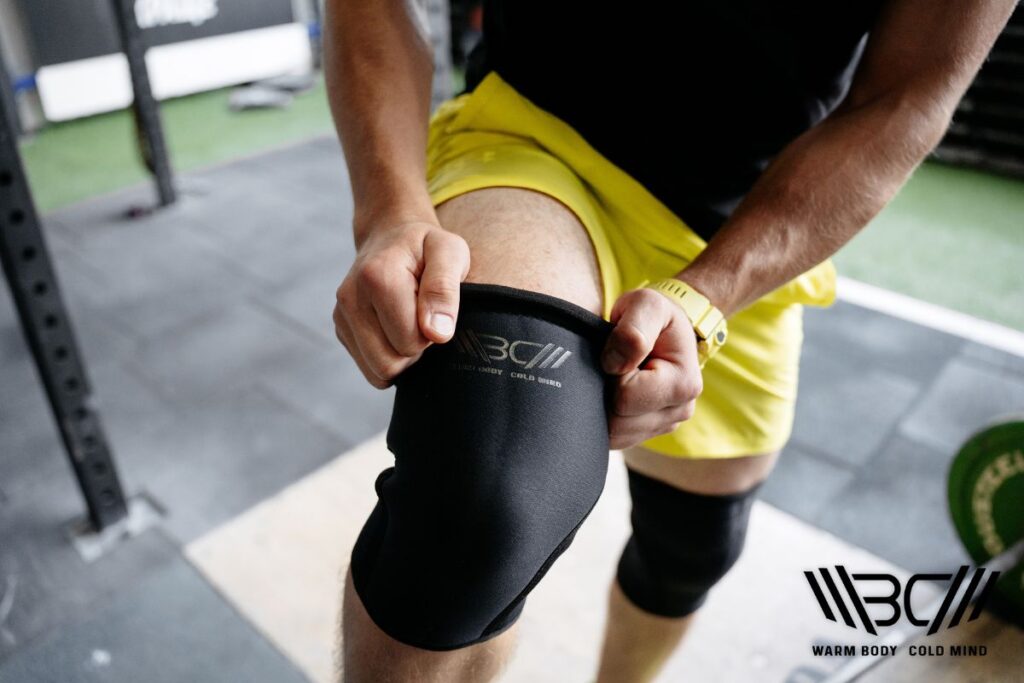
Disadvantages of Knee Sleeves for Squatting
When wearing knee sleeves during training and competition, there are few potential disadvantages to consider before using them. We’ve covered the main ones below.
❌ Potential Injury Risk
Whilst wearing knee sleeves when squatting can provide compression and improve confidence, make sure to maintain focus on the correct form and technique cues throughout the lift.
Lifting sleeves should be used as a training aid and not a crutch to rely on for poor form. On the same point, make sure to stick to a well-organized periodization program when squatting rather than progressing the weight too quickly with knee sleeves.
❌ Reduced Movement Freedom
Wearing knee sleeves tightly around the knee joint provides added compression but at the expense of movement freedom, especially during dynamic movements if not fitted correctly.
Make sure to size and fit knee sleeves with the help of a professional and get used to the new movement patterns before progressing the weight.
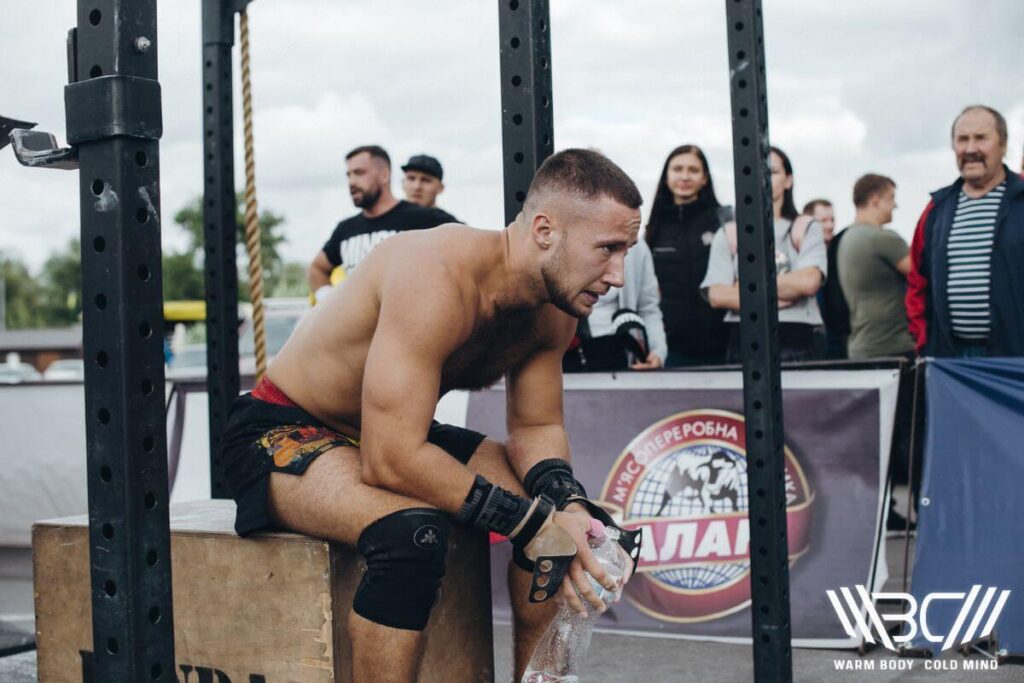
Which Athletes Should Squat in Knee Sleeves?
Knowing when to use knee sleeves is important to avoid over-reliance when lifting. Focus should also be placed on developing the natural movement pattern at smaller weights before adding knee sleeves in.
If you’re wondering should I use knee sleeves for squats then keep reading the section below to help you decide. These are the main types of athletes that should consider knee sleeves:
1. Competitive Strength Athletes
The added compression provided by knee sleeves makes them a great choice for competitive strength athletes who are looking to improve their training and competition performance. These include:
- Competitive Powerlifters
Wearing knee sleeves is ideal for powerlifters where strength performance is the main determining factor. Check the different federations for rules regarding knee sleeve thickness and material. Also, bare in mind that knee wraps may be a better option for maximal performance but with much less movement freedom.
- Strongman and Strongwoman Competitors
Just like powerlifting, strongman and strongwoman competitions require huge feats of strength, making the use of training aids such as knee sleeves warranted. Most competitions allow the use of supportive gear.
Subscribe!
The latest reviews of must-have home gym training equipment, apparel, and supplements that will enhance your performance and bring you new results.
2. Functional Fitness Athletes
Due to the compressive properties provided without sacrificing too much movement freedom, knee sleeves are a great idea for functional fitness athletes performing dynamic, strength-based movement.
Wearing knee sleeves during training and competition can help to keep the knee joint warm, healthy, and properly aligned when moving.
General Strength Training and Sport
You don’t need to be performing at a high-level or be in a competition to get the benefits from wearing knee sleeves. Build up a solid lifting foundation and add knee sleeves into your working sets or for high-volume gym sessions.
Sports requiring speed and power such as rugby, tennis, and volleyball may also benefit from the use of knee sleeves.
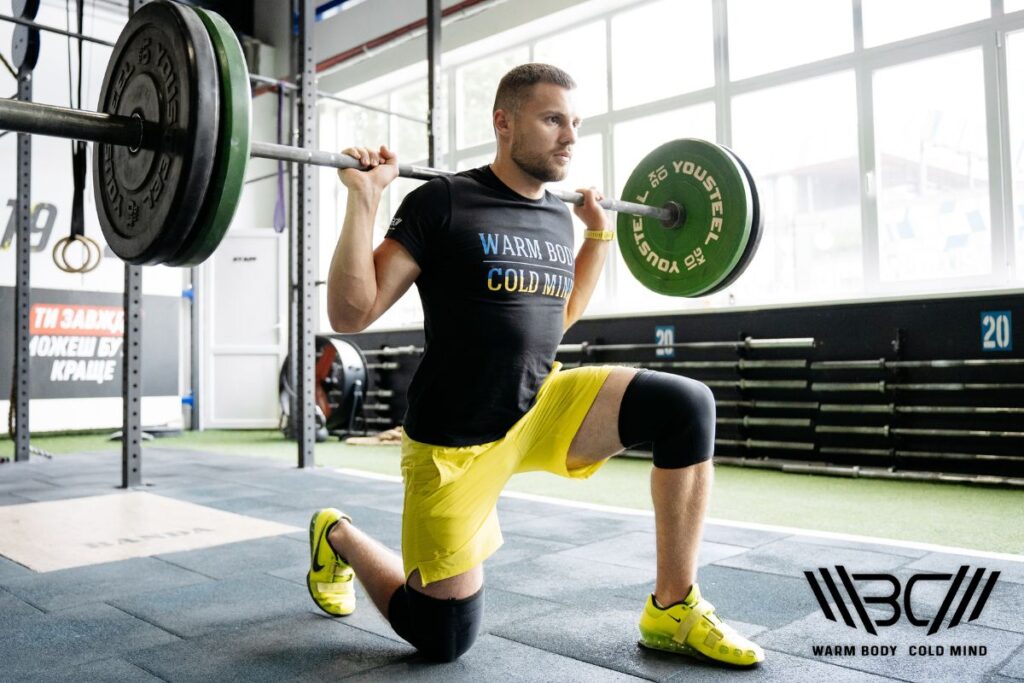
Who Is Not Recommended to Squat in Knee Sleeves?
Perhaps you don’t fit into any of these categories and you’re wondering if I should wear knee sleeves for squats. These are the groups where the use of knee sleeves wouldn’t be recommended.
1. Beginner Gym Users
When you’re just starting out, focus should be placed on developing your natural strength, building solid movement patterns for each lift, and using the technique cues provided by the professionals.
Once you’ve developed these and you’ve seen your numbers gradually progress as you learn more, then it would be the best time to add knee sleeves to your gym bag.
2. General Training
If the bulk of your training session consists of upper body movements or machine-based exercises, it’s likely that using knee sleeves won’t really be of any benefit to you.
Use them only when needed in order to get the best out of wearing them.
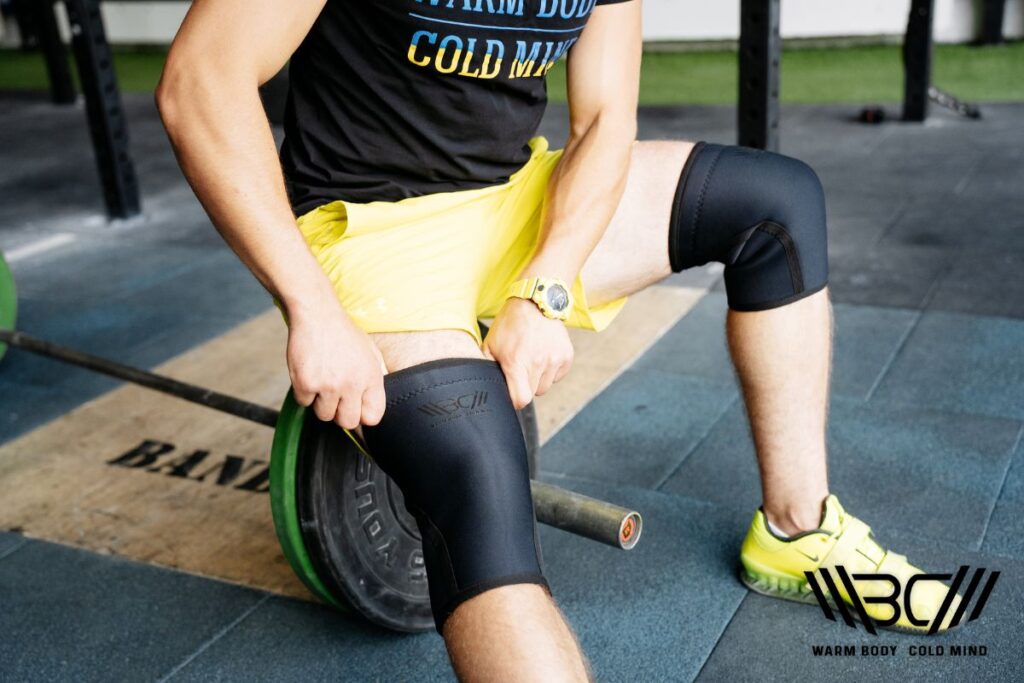
How to Wear a Knee Sleeve for Squats Correctly?
Once the knee sleeves are over the knee joint, they should provide a snug and secure fit. Whilst they will move slightly during the squat or other exercise, a proper fitting process should minimize this.
- Choose the correct knee sleeve size – Consult the sizing chart provided by different brands and measure the size of your knee and surrounding structures with the help of a professional if needed.
- Prepare the knee sleeve by folding it in half – This makes it easier to slide the sleeve up your leg by limiting the amount of friction experienced.
- Sit with your leg extended out – Keep your leg straight and relaxed whilst sitting down before sliding the knee sleeve up your leg.
- Slide the folded sleeve up towards your calf – Slide the sleeve through your foot and up onto your calf.
- Unfold the sleeve onto your knee joint – Unfold the sleeve by pulling the top half over your knee joint. Make sure the top of the sleeve is above the joint by a few inches at least. Your kneecap should be in the middle of the sleeve.
Adjust slightly if needed – Adjust the sleeve slightly if needed, taking care to avoid any folds or wrinkles to ensure a tight, snug fit around the knee joint.
Our Recommended Knee Sleeves for Squats – Weightlifting Knee Sleeves
Our weightlifting knee sleeves are constructed using 0.25” thick neoprene, offering comfort, support, and compression when lifting. This also allows them to absorb moisture and sweat without any unpleasant build-up.
The built-in anti slip system around the edges and anatomical design keeps the knee sleeves secure without them moving around, meaning there is no need to repeatedly adjust them mid set.
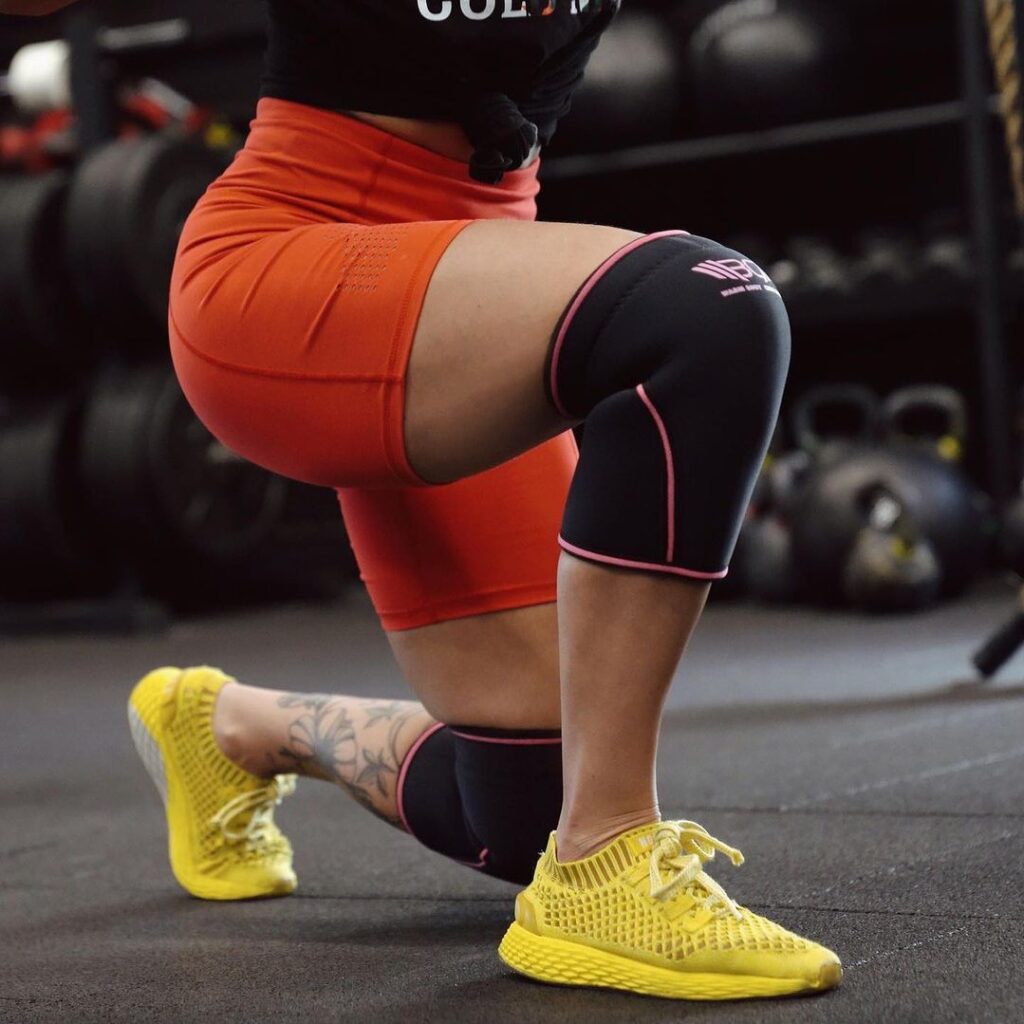
We’ve specifically designed them for weightlifting, powerlifting, running, and sporting activities. They come in three color schemes and from S to XXXL.
Knee Sleeves vs Knee Wraps for Squats
Knee sleeves and knee wraps are terms that are often used interchangeably but they are not the same and shouldn’t be confused with one another.
Knee sleeves slide over the knee joint and surrounding structures offering a comfortable fit and allowing you to wear them throughout your workout if needed. Knee wraps are wrapped around the knee joint in a circular motion to provide much more support and added stability but at the cost of comfort and movement freedom.
Fitting knee sleeves is a much easier process, with the sleeves sliding up the legs and onto the knee joint. Using knee wraps can be a cumbersome process, often taking several minutes to wrap correctly with the help of a friend.
In terms of maximizing performance, knee wraps are the better option. The added support and stability provided by knee wraps can help with squat performance when used correctly.

Knee sleeves provide compression and added support but should mainly be used for general lifting and sports rather than heavy compound training when maximum performance is the main goal.
Both knee sleeves and knee wraps can be used successfully for different sports/ exercises and at different intensities. Learn the most suitable uses and make sure to fit them correctly.
| Feature | Knee Sleeves | Knee Wraps |
| Support | Provide some added support and stability to the knee joints | Wrap tightly around the knee joint offering maximum support and stability |
| Comfort | Very comfortable to wear without any movement restriction | May be quite uncomfortable to wear and can heavily restrict movement |
| Compression | Offer good compression, keeping the knee joint warm, improving blood flow, and reducing swelling | Offer some compression when fitted but mainly designed for support and stability during lifting |
| Ease of Use | Easy to use by sliding up the legs to the knee joints | May take several minutes to wrap correctly, often requiring extra help. Need to be taken off between sets |
| Performance/ Applications | Can help improve performance via added compression, improved lifter confidence, and bounce out of the bottom squat position General weightlifting and sporting events | Can improve lifting performance by offering much more stability and support to the knee joint Heavy powerlifting and weightlifting events/ training |
FAQ
Are Knee Sleeves Good for Squats?
Knee sleeves help to provide support and stability to the knee joint, ligaments, and surrounding structures. When squatting, the knee joint is put under increased pressure at the bottom of the movement, making the addition of knee sleeves good for squat biomechanics and performance.
Do Knee Sleeves Really Work?
By wrapping around the knee joint, knee sleeves provide compression that helps to improve blood flow and reduce pain and swelling when lifting. They provide some support to the knee joint and surrounding structures which means they do work when used correctly.
Do Knee Sleeves Improve Squat Performance?
Knee sleeves can be a useful gym accessory for lifters looking to add an extra percentage to their squat number.
Whilst they don’t provide as much added support and stability as knee wraps, they offer compression which improves blood flow, increases warmth, and reduces pain to the knee joint. These may all lead to improvements in squat performance.
Conclusion
Knee sleeves go around the knee joint and surrounding structures to provide added compression for general weightlifting and sporting events where the knee joint is put under increased pressure. Wearing knee sleeves for squatting can help improve knee joint stability, blood flow, and provide added bounce at the bottom squat position.
Knee sleeves should be used for normal working sets after a suitable squat warm up has been performed. Knee wraps would be the better squat option when looking at maximal performance.
Do you use knee sleeves for squatting? What about other exercises? Share your thoughts in the comments box below.
References
- Joshua A. Sear, Trent K. Hoare, Aaron T. Scanlan, Grant A. Abt , Benjamin J. Dascombe, “The effects of whole-body compression garments on prolonged high-intensity intermittent exercise,” Journal of Strength and Conditioning Research 7, no.24 (2010):1901-1910. doi:10.1519/JSC.0b013e3181db251b
- Stephen B. Machek, Thomas D. Cardaci, Dylan T. Wilburn, Mitchell C. Cholewinski, Scarlett L Latt, Dillon R. Harris, Darryn S. Willoughby, “Neoprene Knee Sleeves of Varying Tightness Augment Barbell Squat One Repetition Maximum Performance Without Improving Other Indices of Muscular Strength, Power, or Endurance,” Journal of Strength and Conditioning Research 35, no.1 (2021)):S6-S15. doi:10.1519/JSC.0000000000003869
- Willy A. Gomes, Lee E. Brown, Enrico G. Soares, Josinaldo J. Da Silva, Fernando H. D. Da Silva, Erica P. Serpa, Daniel A. Correa, Guanis de B. VIlela Junior, Charles R. Lopez, Paulo H. Marchetti, “Kinematic and sEMG Analysis of the Back Squat at Different Intensities With and Without Knee Wraps,” Journal of Strength and Conditioning Research 9, no.29 (2015):2482-2487. doi:10.1519/JSC.0000000000000922
- Lee Herrington, Claire Simmonds, Julian Hatcher, “The effect of a neoprene sleeve on knee joint position sense,” Research in Sports Medicine 1, no.13 (2005):37-46. doi:10.1080/15438620590922077
- EvolveAI, “How to Properly Put on Knee Sleeves,” YouTube, https://youtube.com/shorts/M0LQuiGpadQ?si=h7X4T7F3iCueBH2i (Accessed December 26, 2023)
- Jason P. Lake, Patrick J. Carden, Kath A. Shorter, “Wearing knee wraps affects mechanical output and performance characteristics of back squat exercise,” Journal of Strength and Conditioning Research 26, no.10 (2012):2844-2849. doi:10.1519/JSC.0b013e3182429840
- Photo by Compression Knee Sleeves roguefitness.com, photo by knee brace unsplash.com
Author: Sergii Putsov
PhD in Sport Science, Olympic weightlifting, Strength & Conditioning coach and fitness expert
Sergii Putsov is a professional weightlifter with over 20 years of experience and multiple national medals. He was a member of the National weightlifting team, competing in the 94 kg weight class. Sergii holds a master’s degree in Olympic & Professional Sport Training and a Ph.D. in Sport Science. After his athletic career, Sergii transitioned into coaching and is now responsible for designing training programs, writing blog articles, providing live commentary for international weightlifting competitions, and hosting sport and fitness seminars worldwide.


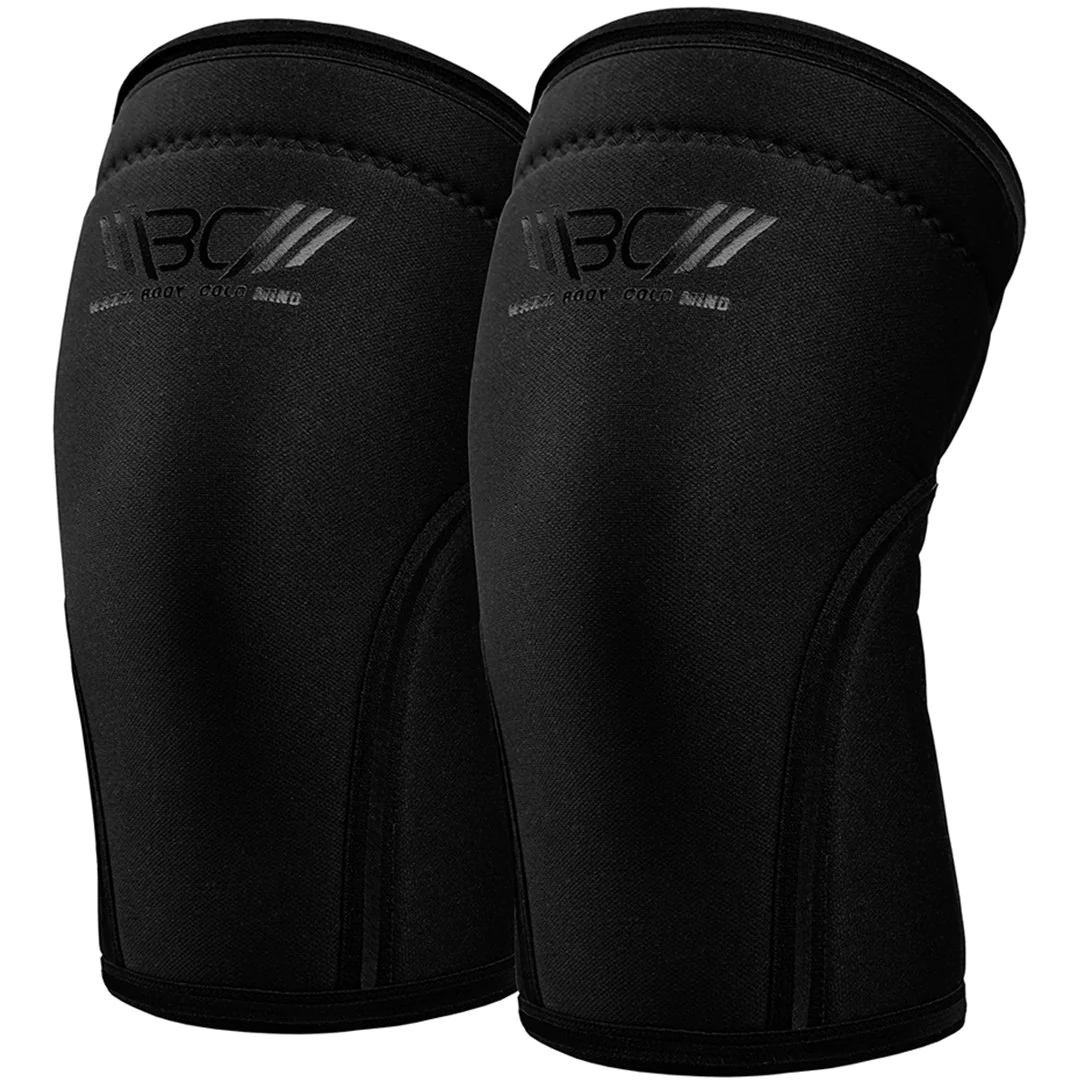
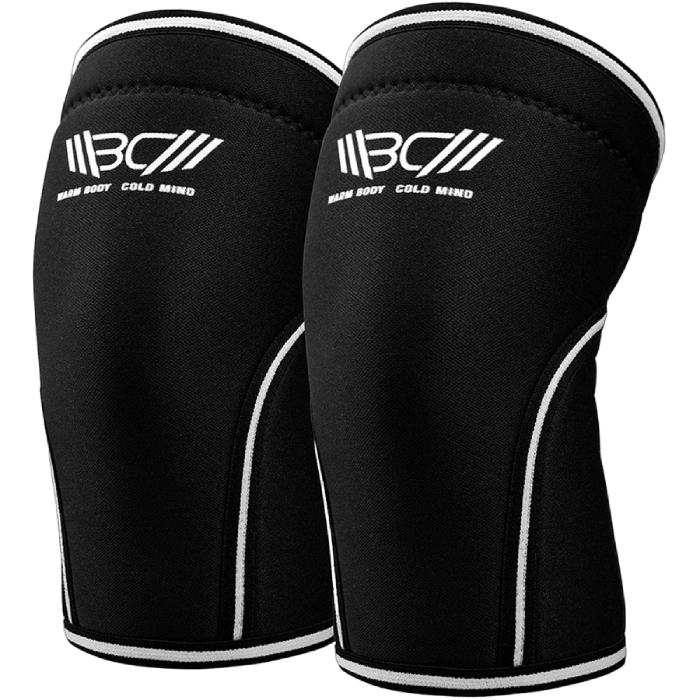

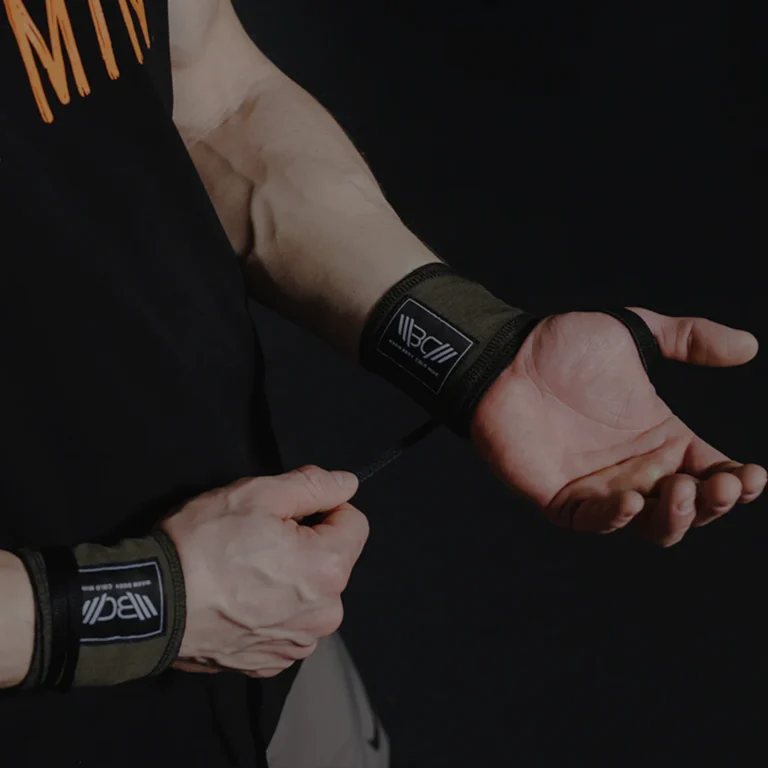
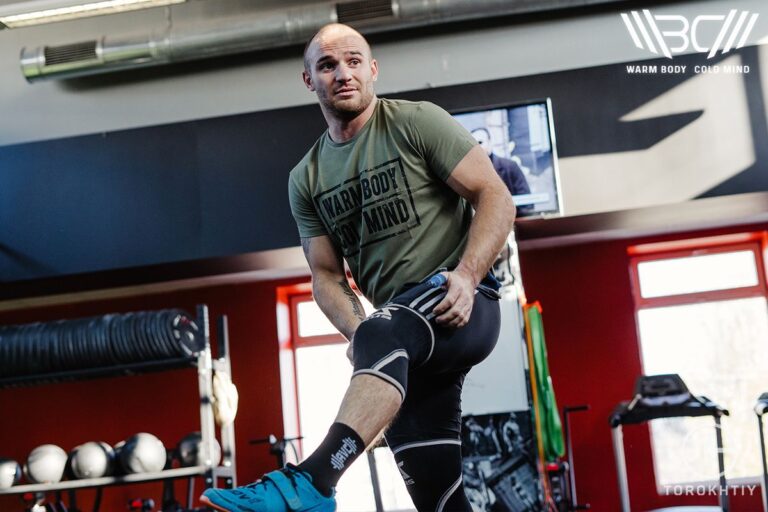
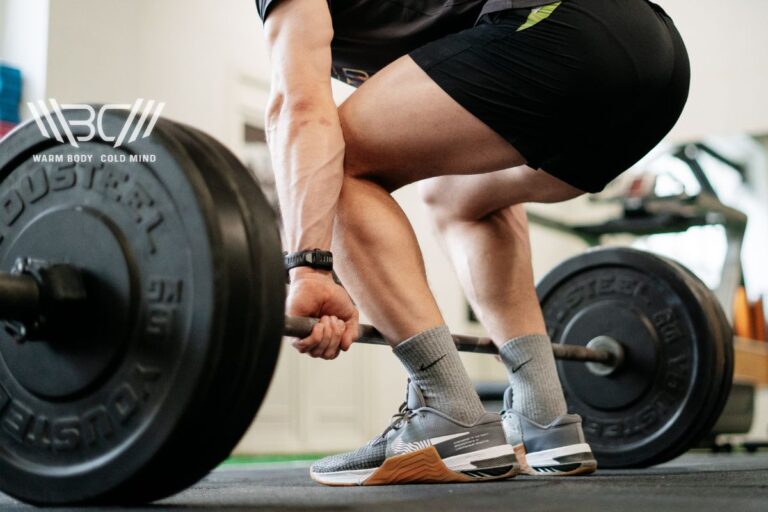
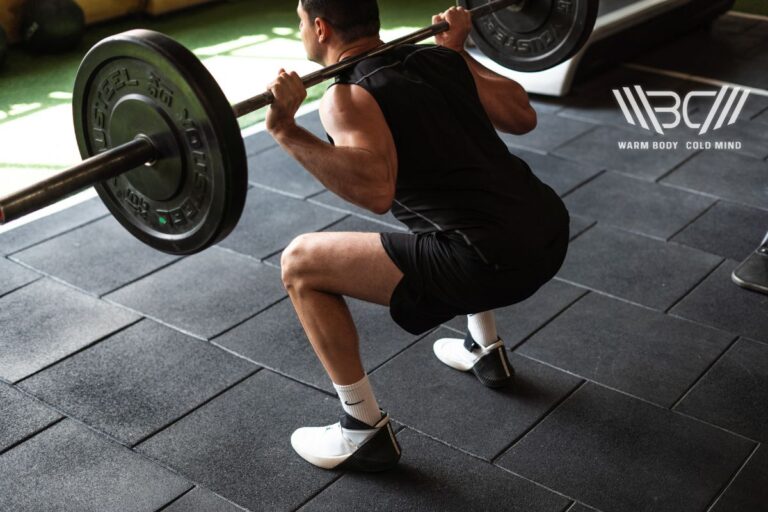
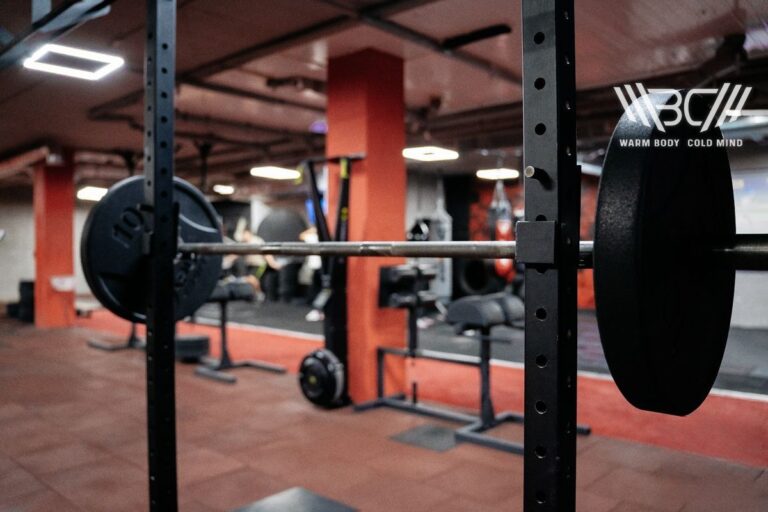
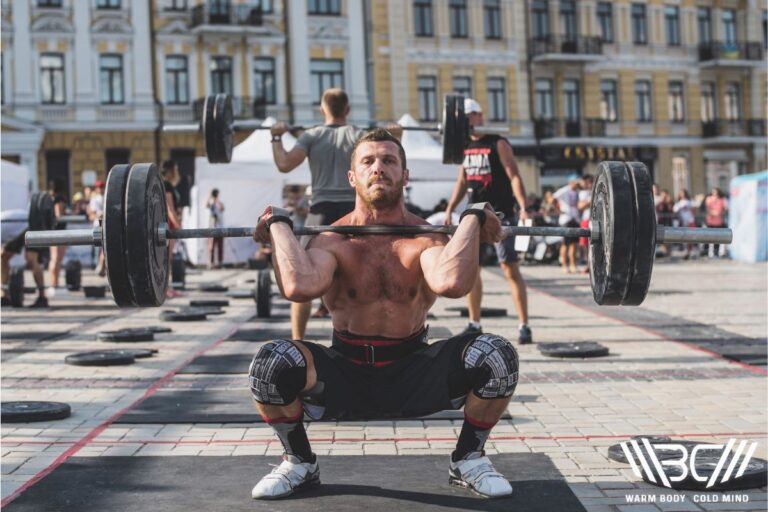
I am very grateful for this description of the use of knee sleeves for squats. After some searching on the web, I have to admit that your article is the most informative I have come across on this topic. I also like how easy and clear the article is written. Your insights have greatly improved my understanding of the topic and I appreciate the depth of analysis you have provided. Keep up the great work!